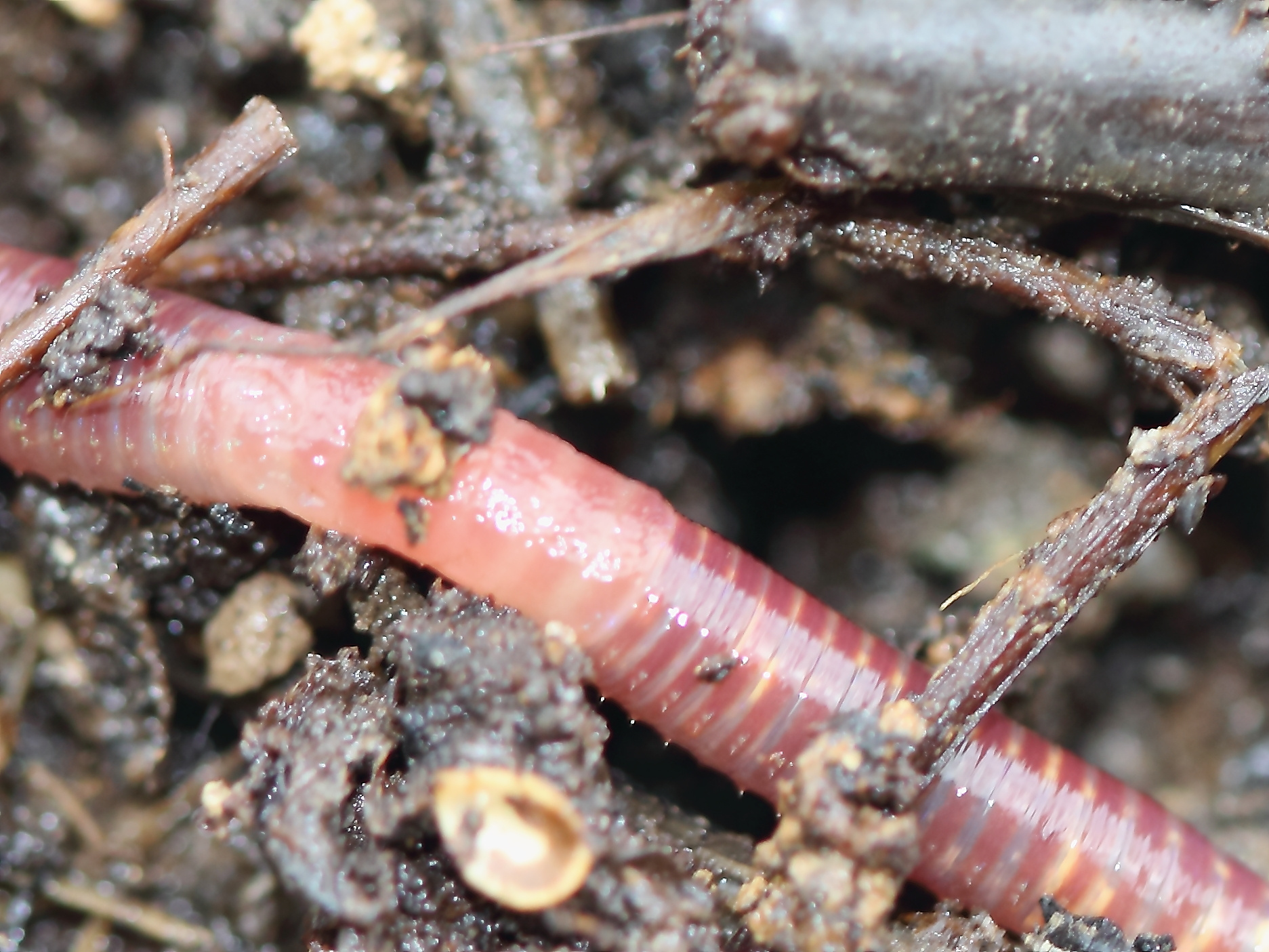|
Eisenia Andrei
''Eisenia andrei'' is a close relative of the 'brandling' or 'tiger' worm ''Eisenia fetida''. Like ''E. fetida'', it is epigeic, i.e. it prefers to live in compost or leaf litter rather than mineral soils. It can be distinguished from ''E. fetida'' as it is darker in colour, and the characteristic stripes are less pronounced. Although its status as a separate species was fully confirmed in the mid-1980s by molecular analyses (based on electrophoresis of protein Proteins are large biomolecules and macromolecules that comprise one or more long chains of amino acid residue (biochemistry), residues. Proteins perform a vast array of functions within organisms, including Enzyme catalysis, catalysing metab ... isoforms), ''E. andrei'' is still often misidentified and confused with '' E. fetida''. The muscles of the ''Eisenia andrei'' embryos appear in groups of at least two distinct muscles that cross the ventral midline and initially reach towards the lateral side of the embryo. ... [...More Info...] [...Related Items...] OR: [Wikipedia] [Google] [Baidu] |
Eisenia Fetida
''Eisenia fetida'', known under various common names such as manure worm, redworm, brandling worm, panfish worm, trout worm, tiger worm, red wiggler worm, etc., is a species of earthworm adapted to Decomposition, decaying organic material. These worms thrive in rotting vegetation, compost, and manure. They are epigean, rarely found in soil. In this trait, they resemble ''Lumbricus rubellus''. The red wiggler is reddish-brown in color, has small rings around its body, and has a yellowish tail. Groups of bristles (called setae) on each segment of the worm move in and out to grip nearby surfaces as it stretches and contracts its muscles to push itself forward or backward. ''E. fetida'' worms are native to Europe, but have been introduced (both intentionally and unintentionally) to every other continent except Antarctica. ''E. fetida'' also possesses a unique natural defense system in its coelomic fluid; cells called coelomocytes secrete a protein called lysenin, which is a por ... [...More Info...] [...Related Items...] OR: [Wikipedia] [Google] [Baidu] |
Epigeal
Epigeal, epigean, epigeic and epigeous are biological terms describing an organism's activity above the soil surface. In botany, a seed is described as showing epigeal germination when the cotyledons of the germinating seed expand, throw off the seed shell and become photosynthetic above the ground. The opposite kind, where the cotyledons remain non-photosynthetic, inside the seed shell, and below ground, is hypogeal germination. The terms epigean, epigeic or epigeous are used for organisms that crawl (epigean), creep like a vine (epigeal), or grow (epigeous) on the soil surface: they are also used more generally for animals that neither burrow nor swim nor fly. The opposite terms are hypogean, hypogeic and hypogeous. An epigeal nest is a term used for a termite mound, the above ground nest of a colony of termite Termites are a group of detritivore, detritophagous Eusociality, eusocial cockroaches which consume a variety of Detritus, decaying plant material, generally i ... [...More Info...] [...Related Items...] OR: [Wikipedia] [Google] [Baidu] |
Electrophoresis
Electrophoresis is the motion of charged dispersed particles or dissolved charged molecules relative to a fluid under the influence of a spatially uniform electric field. As a rule, these are zwitterions with a positive or negative net charge. Electrophoresis is used in laboratories to separate macromolecules based on their charges. The technique normally applies a negative charge called cathode so anionic protein molecules move towards a positive charge called anode. Therefore, electrophoresis of positively charged particles or molecules (cations) is sometimes called cataphoresis, while electrophoresis of negatively charged particles or molecules (anions) is sometimes called anaphoresis. Electrophoresis is the basis for analytical techniques used in biochemistry and molecular biology to separate particles, molecules, or ions by size, charge, or binding affinity, either freely or through a supportive medium using a one-directional flow of electrical charge. It is use ... [...More Info...] [...Related Items...] OR: [Wikipedia] [Google] [Baidu] |
Protein
Proteins are large biomolecules and macromolecules that comprise one or more long chains of amino acid residue (biochemistry), residues. Proteins perform a vast array of functions within organisms, including Enzyme catalysis, catalysing metabolic reactions, DNA replication, Cell signaling, responding to stimuli, providing Cytoskeleton, structure to cells and Fibrous protein, organisms, and Intracellular transport, transporting molecules from one location to another. Proteins differ from one another primarily in their sequence of amino acids, which is dictated by the Nucleic acid sequence, nucleotide sequence of their genes, and which usually results in protein folding into a specific Protein structure, 3D structure that determines its activity. A linear chain of amino acid residues is called a polypeptide. A protein contains at least one long polypeptide. Short polypeptides, containing less than 20–30 residues, are rarely considered to be proteins and are commonly called pep ... [...More Info...] [...Related Items...] OR: [Wikipedia] [Google] [Baidu] |
Lumbricidae
The Lumbricidae are a family of earthworms. About 33 lumbricid species have become naturalized around the world, but the bulk of the species are in the Holarctic region, from Canada (e.g. ''Bimastos lawrenceae'' on Vancouver Island) and the United States (e.g. ''Eisenoides carolinensis'', '' E. lonnbergi'', and most '' Bimastos'' spp.) and throughout Eurasia to Japan (e.g. ''Eisenia japonica'', ''E. koreana'', and ''Helodrilus hachiojii''). An enigmatic species in Tasmania is '' Eophila eti''. Currently, 670 valid species and subspecies in about 42 genera are recognized. This family includes the majority of earthworm species well known in Europe and Asia. Genera The family consists of these genera: * '' Allolobophora'' Eisen, 1874 * '' Alpodinaridella'' Mršić, 1987 * '' Aporrectodea'' Orley, 1885 * '' Bimastos'' Moore, 1893 * '' Castellodrilus'' Qiu & Bouché, 1998 stat. nov. * '' Cataladrilus'' Qiu & Bouché, 1998 * '' Cernosvitovia'' Omodeo, 1956 * '' Creinella'' Mršić, ... [...More Info...] [...Related Items...] OR: [Wikipedia] [Google] [Baidu] |

